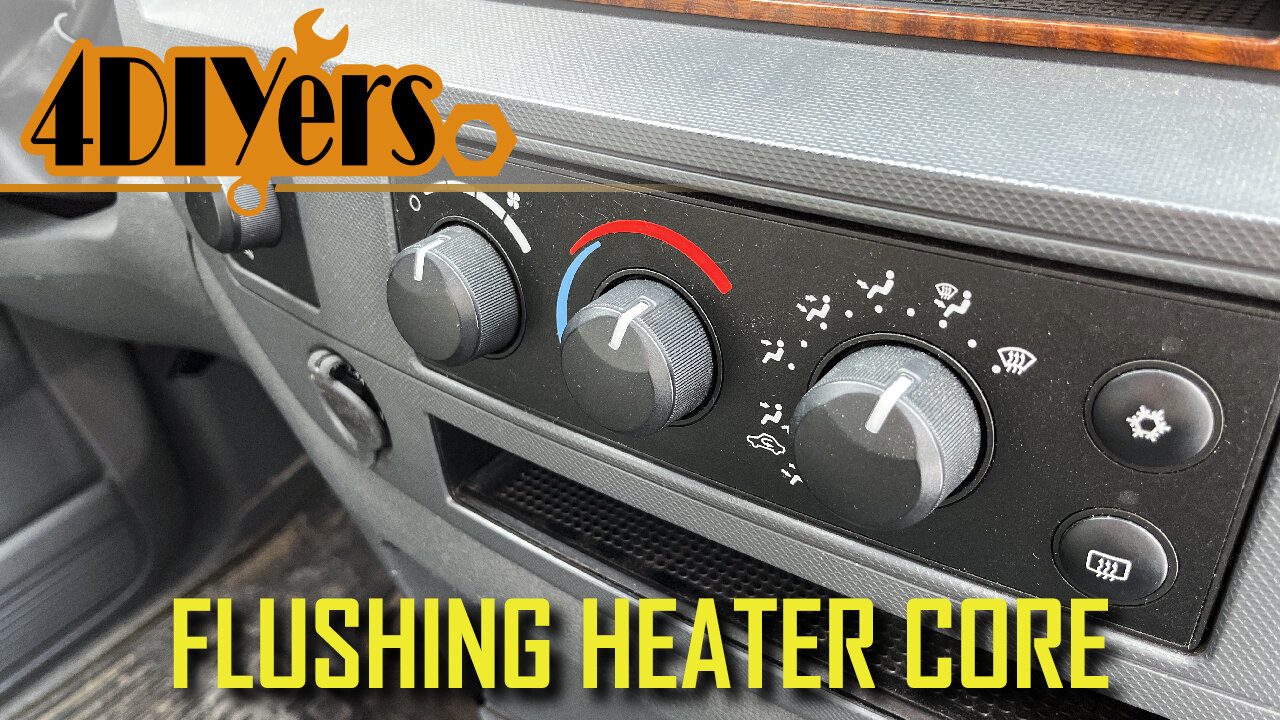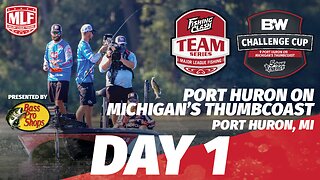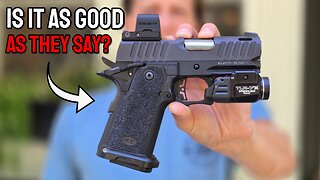Premium Only Content

How to Flush a Heater Core on your Car
How to flush the heater core on your vehicle. It’s important to take the opportunity to flush your vehicle's heater core when you have drained a substantial amount of fluid from the cooling system. In this case, I am doing a cooling system overhaul on my 2006 dodge ram 1500 equipped with a 5.7L V8. Procedures may vary slightly between vehicles due to the location of the hoses. Flushing out the heater core will remove any sediment or sludge, which may be trapped inside. The heater core is a small radiator located in your vehicle, HVAC system where the air blows past it to provide heat for the cabin. A plugged heater core can cause a lack of heat in your vehicles cabin.
#coolingsystems #oemtools #emanualonline
eManualOnline: bit.ly/3BTq3lp
20% Discount Code: 4DIYERS20
OEMTools 87043 Coolant Funnel Kit :https://www.mobiledistributorsupply.com/87043-oemtools-87043-professional-no-spill-coolant-funnel-kit-oem-4
Website: http://4diyers.com
Patreon: https://www.patreon.com/4diyers
Facebook: https://www.facebook.com/4diyers
Twitter: https://twitter.com/4DIYers
Instagram: https://www.instagram.com/4diyers/
Tumblr: http://4diyers.tumblr.com
Pintrest: https://www.pinterest.com/4diyers/
Tools/Supplies Needed:
-socket and ratchet set
-new replacement heater core hoses
-coolant
-distilled water
-water hose
-bucket
Procedure:
With many of the components removed here on my truck, it’s easier to see where the heater core lines are routed. As you can see I have removed the water pump and to the left, the two smaller rubber hoses are for the heater core. Heater core lines will go through the white firewall, routed and behind the dashboard directly to the heater core. Both of these lines should be disconnected.
Next I have a clear bucket so you’re able to see the flushing process better. Using a hose set on a lower pressure, this water will be pumped through the heater core in both directions to ensure everything has been flushed out. The water pressure should not exceed 20psi, otherwise the system can be damaged.
If you are required to do this while the engine is still together, then I would recommend purchasing the appropriate sized clear lines to connect directly to the firewall, you’ll see the connection point at the firewall in a moment.
As you can see I am alternating between the inlet and outlet hoses to ensure everything is flushed out from the heater core. The first time around you can see there is still quite a bit of coolant left in there. As I progress more, the water becomes cleaner and clearer.
Once the water that comes from the heater core is clean, you’re officially done.
New lines are installed and the factory spring clamps are replaced with gear clamps.
The system will require about a 50/50 mix of coolant and distilled water. This can be adjusted slightly depending on your climate as this will affect the boiling and freezing points of your coolant. Only use distilled water in the cooling system as there are no additives or minerals which may cause problems in your cooling system down the road.
As you can see when the funnel is filling up, air will slowly escape from the system. You can squeeze the upper and lower radiator hoses to help push air out of the system. Fill the system until the level no longer drops in the funnel.
Once the level stays the same, make sure the vehicle is on level ground, turn your fan on full and the heater to the hottest setting, then start the engine and watch the level. Monitor the level of the coolant, if the level drops, add more. Only keep about a couple of inches of coolant in the funnel and wait until the engine comes up to full operating temperature. Watch the gauge constantly so the engine doesn’t overheat.
Once the level no longer drops, turn the engine off and let it sit until it cools down.
When the fluid is hot, it’ll expand, once it cools down it’ll contract and you’ll need to add coolant. I warmed the engine up again and repeated the process just to be safe. Then let it cool down again. The valve in the center of the funnel is closed when there’s still coolant inside, it’s removed from the radiator and this is dumped into the reservoir tank. The reservoir tank should be between the minimum and maximum lines, so added more if necessary.
Go back and tighten those gear clamps may be required when the engine cools down, then check for any leaks. If none are found, you are officially done.
Thank you to all those who watch my videos and support my content. Don't forget to subscribe to my channel for future tutorial videos and like my video if you found it helpful. New videos are always being uploaded every week!
© 4DIYers 2013
All Rights Reserved
No part of this video or any of its contents may be reproduced, copied, modified or adapted, without the prior written consent of the author.
-
 LIVE
LIVE
Major League Fishing
2 days agoLIVE! - Fishing Clash Team Series: Challenge Cup - Day 1
9,729 watching -
 41:26
41:26
The Mel K Show
2 hours agoMel K & Clay Clark | Financial Success Hides Behind Self Discipline: Five Pillars | 8-24-25
3.36K -
 LIVE
LIVE
Lofi Girl
2 years agoSynthwave Radio 🌌 - beats to chill/game to
441 watching -
 LIVE
LIVE
The Official Steve Harvey
12 days ago $4.96 earned24 HOURS OF MOTIVATION w/ STEVE HARVEY
595 watching -
 25:56
25:56
DeVory Darkins
19 hours ago $0.38 earnedTrump drops ULTIMATE BOMB on Democrat Mayors as ICE makes SHOCKING Announcement
24.4K134 -

TonYGaMinG
4 hours ago🟢 ABI WITH FRIENDS | 🍩JOE DONUTS | 😶 🌫 VLADSGAMINGCARTEL |
11.8K4 -
 21:24
21:24
marcushouse
10 hours ago $0.06 earnedStarship Flight 10: Go or No? 🚀
14.3K11 -
 LIVE
LIVE
MrR4ger
15 hours agoSUNDAY FUNDAY w/ R4GER - VARIETY / DIABLO 4/ FOR HONOR / ETC?
79 watching -
 5:40
5:40
WhaddoYouMeme
3 days ago $0.19 earnedThey’re Calling This the End of Masculinity
18K17 -
 15:24
15:24
Tactical Advisor
19 hours agoBest 2011 of 2025 | Bul Armory Ultralight Pro
21.8K1